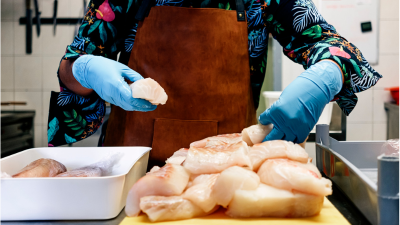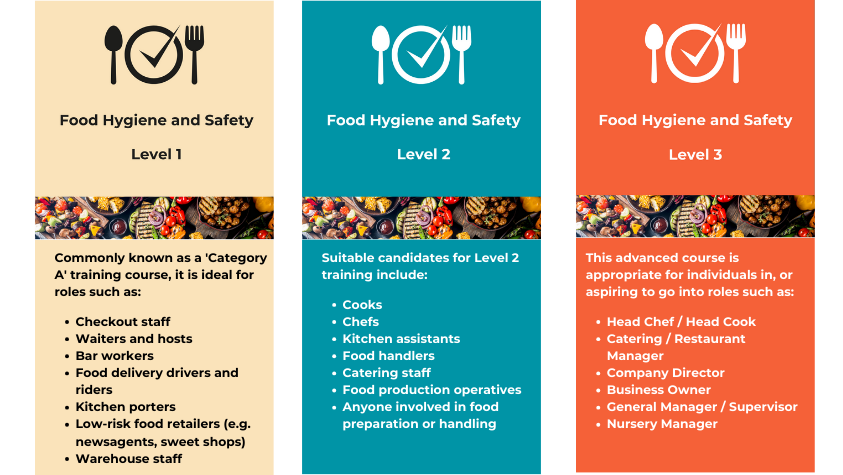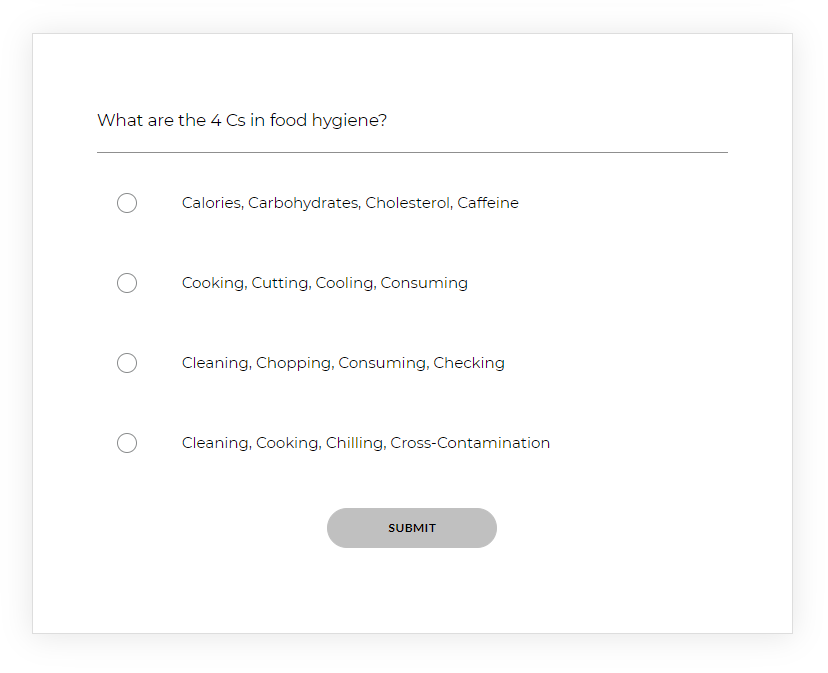Food Handler’s Certificate

What is a food handler’s certificate?
Food safety is important for those involved in food handling, preparation and service. Understanding the fundamentals in food safety often involves completing food hygiene training. After completion of the course, you will often receive a food handler’s certificate, indicating proficiency in safe food practices.
In this article, we’ll discuss the process of obtaining a food handler’s certificate, look at frequently asked questions surrounding food hygiene certification and what you will learn in essential food hygiene training to gain your certificate.

The role of Environmental Health Officers (EHO) and the food handler’s certificate
A food handler’s certificate not only validates that an individual has taken training but also serves as evidence that can be presented to Environmental Health Officers (EHO). In the UK, EHOs carry out food hygiene inspections to ensure that a food business is compliant with food hygiene regulations when serving and preparing food for the public. During these inspections, EHOs assess various aspects of the food business’s premises, including cleanliness, sanitation, food handling, preparation, storage practices and pest control measures.
The results of the food hygiene inspection for the inspected food business range from 0 to 5 (0 being the lowest rating you can get, to 5 as the highest rating) under the Food Hygiene Rating Scheme (FHRS). This enables customers to review a food establishment’s hygiene rating in order to decide where they eat at or buy food. Ratings are published online on the Food Standards Agency website in England, Wales and Northern Ireland, or on the Food Standards Scotland website in Scotland.
What food handling certificate do I need?
The level of food hygiene certification that is needed depends on your specific role within a food business. Front-of-house staff in restaurants, individuals working in bars or as food delivery drivers may be fine with a Level 1 food handler’s certificate. Roles such as chefs, cooks and food preparers/handlers/servers across diverse settings like hospitals, food trucks, schools, hotels and cafes will need more advanced training, typically at Level 2. Managers and supervisors overseeing staff and food safety systems, typically require Level 3 certification. You can find more information about which roles require which level of food hygiene certification in the image below:

Do you have to pass a test to receive your food handler’s certificate?
Yes, successful completion of a test or assessment is normally necessary for obtaining a food handler’s certificate. This demonstrates a good understanding of food hygiene principles. In our online food hygiene courses, our final assessment mainly consists of multiple-choice questions. Below is an example of a end of module assessment:

How long is the food handler’s certificate valid for?
While food hygiene certificates do not have a legal expiration date, industry best practices advocate renewing your training every two years. Retaking training ensures that food handlers refresh their food safety knowledge and remain abreast of updates in regulations and food hygiene best practices. The Food Safety (General Food Hygiene) Regulations 1995 is not particularly specific and says that food handlers must be ‘trained in food hygiene matters commensurate with their work activities’.
Key components of food hygiene courses
Food hygiene courses include various modules, addressing important aspects of food safety tailored to different food hygiene certification levels. Key topics include:
- The Four Cs of Basic Food Hygiene: Cleaning, Cooking, Chilling and Cross-Contamination Prevention.
- Personal Hygiene and Sickness: Personal hygiene and managing illness, emphasising proper handwashing.
- Time and Temperature Control: Understanding the critical temperatures for storing, thawing, cooking and reheating food to prevent bacterial growth.
- Cross-Contamination Prevention Techniques
- The Food Hazards: Identification and mitigation of food hazards, including biological, chemical and physical food hazards.
- Cleaning and Sanitising: Proper methods for cleaning and sanitising surfaces, utensils and equipment in food preparation areas.
- Pest Control Measures
- Food Hygiene Laws: Familiarity with food safety regulations.
- Preparation and Storage: Adhering to best practices for the preparation and storage of food items, including appropriate handling techniques to minimise the risk of contamination and implementing appropriate storage solutions.
Conclusion
Obtaining a food handler’s certificate involves food hygiene training, ensuring compliance with food hygiene regulations, implementing high food safety standards and safeguarding public health. It also serves as evidence of competency in food safety practices.
We hope this article has answered all your frequently asked questions about a food handler’s certificate, but if you need any additional help, you can call us on 01327 552136, email us, or use the live chat feature on our website.
Related Links
